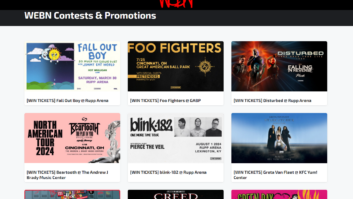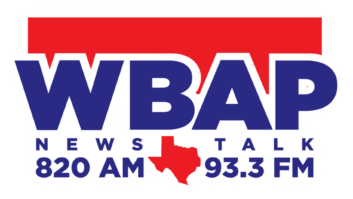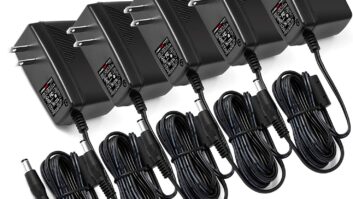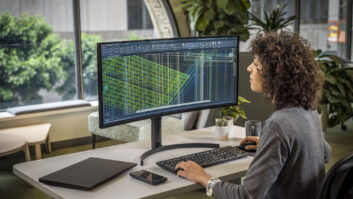AUSTIN, Texas The need to grant stations the right to increase the level of IBOC power they are allowed to transmit is the issue in HD Radio. That’s according to Greater Media Vice President of Engineering Milford Smith in a session at The NAB Radio Show about the power increase.
Participants had agreed before-hand to have a civil discussion about the topic. That’s because the coalition of 18 mostly commercial groups who petitioned the FCC for the voluntary increase say their tests show there would be minimal interference to analog signals if the IBOC power were increased up to10 dB — from the current –20 dB below the analog carrier to –10 dB — while NPR Labs tests concluded the analog would be greatly impacted by such an increase.
The digital coverage must replicate the analog or IBOC “will be seen as deficient,” Smith said, also noting that building penetration at existing power levels is not good.
Continental Vice President of Engineering Dan Dickey agreed that the noise in office environments competing with the IBOC signal is “horrible” and the “only way around that is to get a bigger signal to [the radio].”
Portable audio devices typically have small antennas. Noting that HD Radio portables are expected on the market in 2009, iBiquity Digital Broadcast Technology Manager Jeff Detweiler said, “An earbud doesn’t make a good antenna.”
The coalition and iBiquity have issues with the NPR report in regards to whether the majority of predicted interference is inside or outside the FCC-predicted contour line. The FCC only protects within the line. That’s the 60 dBu contour line for all FMs, except for Class Bs (54 dBu) and Class B1s (57 dBu).
In response to questions about the study, NPR Labs Senior Technologist John Kean added FCC-protected contour lines to the maps associated with the predicted IBOC coverage and interference study.
(click thumbnail)Milford Smith and Mike Starling chatted before their elevated power session. Photo by Leslie StimsonThe FCC and commercial stations focus on protecting stations from interference within their contour line. However non-coms find listening outside the line valuable as donors can live outside the contour.
Mike Starling, vice president and chief technology officer of NPR and executive director of NPR Labs, said, “We’re very bullish on digital radio. We don’t believe in leaving anyone behind.” What’s not to like about the 10-percent digital increase is the impact on analog, he said.
Dickey agreed, saying, “Ninety percent of your revenue stream is going to come from your analog for the near future and you have to protect that.”
Common amplification and space-combining are the only practical ways to achieve the power increase, he said.
Harris Broadcast Systems Vice President for Transmission Research & Technology Geoff Mendenhall said, “No knows where this will go. It may turn out a lot of stations wind up at the –12 or –14 dB level. It’s getting to that –10 dB that the challenges are more severe.”
In the meantime, iBiquity, NPR Labs and members of the coalition are talking and trying to both understand the differences in their tests as well as discussing the practicalities of IBOC boosters and asymmetrical sideband power levels to achieve the increased digital coverage, in conjunction with a power increase.
We may see some of those solutions at the spring NAB Show, Mendenhall said.
Smith said the next step is to get more stations on the air with higher IBOC power levels under STAs to “gain more experience.”
IBiquity Digital President/CEO Robert Struble said in an interview that the elevated power issue is “complex,” however he said he thinks it will be worked out.
A commercial engineer who wished to remain anonymous said, “This will take a while. I’m hoping some commonality can be found.”
First Prototype Accessible HD-R Receiver Displayed
Both NDS and iBiquity had a prototype Dice HD Radio receiver for the visually impaired in their booth. The unit is part of the accessible radio initiative, a joint effort from NPR, Towson University and Harris Corp. to develop dedicated HD Radio receivers for deaf or hard-of-hearing and visually impaired listeners.
Voice announcements are made when turning the radio on or off, as well as for several other functions. Sources credited the International Association of Audio Information Services with coming up with this approach.
By pushing in the tuning knob, the radio “speaks” the display menu to the user. By holding the tuning knob, the radio announces the time. Pressing the “RRS” button turns on the Radio Reading Service.
The radio interface is configured to be easily usable even if the user is not able to see the faceplate.
The Dice radios could be on the market by year-end, sources said.
NPR has been working on a new class of programming for deaf or hard-of-hearing and visually impaired listeners that uses a combination of low bit-rate audio multicast, datacast and conditional access HD Radio technology.
The new services, distributed through NPR and said to be near ready to launch, will include a captioned radio text stream for the hearing impaired. Visually impaired audiences will also be able to access a Digital Radio Reading Channel over which the text of daily newspapers, books and magazine articles will be read.
The service will use HD Radio technology’s conditional access feature from NDS, which allows a broadcaster to send content exclusively to designated receivers.
‘Embedded’ Exporters Coming
Along with the first embedded exporters for HD Radio comes a new communications protocol for the transmission equipment — “HDP,” which stands for HD Protocol.
HD Radio stations use the exporter to combine multicast audio channels and advanced data services along with a station’s main audio channel into a format suitable for transmission.
Announced at the spring NAB Show, the new exporter can be upgraded via USB rather than a CD drive.
Panelists in a session on the embedded exporter said the new generation promises enhanced reliability and more features, while lowering the cost to convert.
One issue with the previous “Ex Gen” architecture was even though the PC was taken out of the transmitter site, there was still a Linux unit in the airchain, said Gary Liebisch, regional sales manager for Nautel. “This removes that.”
Dan Dickey, vice president of engineering for Continental, said the new HDP exporter has improved reliability “because it has about 10-percent of the parts of the previous exporter.” Its small size yields power savings of about 80 percent, resulting in the “fastest and easiest path to HD,” said Dickey.
The current exciter has four methods of accepting data, said iBiquity Digital’s Jeff Detweiler, director of broadcast business development, in an interview. With the new communications protocol, the importer, exporter and the exciter all communicate with each other in a simple, common language.
This allows for innovation and manufacturers can design HD Radio transmission products that are more like the rest of their product line, rather than relying heavily on an iBiquity reference design, both he and the transmission hardware panelists said.
Those who purchase the new HDP exporters will need to upgrade the software of their importer, exciter and PSD generators.
HD Radio EPG Members Seek Reaction to Report
Members of the project team for the HD Radio electronic program guide are looking for feedback from the industry to their just-released report that describes station business requirements, system architecture and specifications for EPG as well as various ways consumers could use the EPG. The report is at: www.nabfastroad.org.
The EPG is targeted by the NAB’s FASTROAD (Flexible Advanced Services for Television & Radio On All Devices) technology advocacy program.
The NAB FASTROAD project team for the HD Radio EPG initiative includes BIA Financial Network, Broadcast Signal Lab and Unique Interactive. They are all working with iBiquity Digital to improve the radio user interface to make them easier for consumers to use.
In a session devoted to EPG, David Maxson, managing partner of Broadcast Signal Lab, said that right now there’s little incentive for listeners to stay tuned to a station without forward promotion. “Stations will be stickier if they have a program guide.”
Four possible delivery mechanisms put forth by the group are in the report. They are: each station delivers its own EPG data, each station transmits EPG data for an entire market, each station in a market carries some or all the EPG data of every station in a market and each station transmits a “pointer” to a general EPG resource.
Broadcaster expectations for the HD Radio-based service are that it’s organized in a way that minimizes station workload as well as cost and that the information remain secure until published, Maxson said.
IBiquity Vice President for Advanced Services Joe D’Angelo said that in 2005, the technology developer began looking at digital radio and television systems around the world and found EPGs were a part of those systems.
“We designed an EPG that would work over our system. We didn’t know if the industry would embrace it and if the workload needed to implement it was reasonable.” D’Angelo said the group looks forward to feedback on its proposals.
EPG for radio is harder than for television, due to the mobile nature of radio listening and because the print industry has been publishing TV schedule information for years, while there is no one repository for all that information for radio, said Skip Pizzi, a consultant to BIA for the project who is also a Radio World columnist.
A prototype Web browser-based EPG authoring system, showing the radio station end of the project, was on display at the BIA booth. Unique Interactive, which helped create the EPG for the Eureka-147 DAB system in Europe, created the prototype demo.
Metal Theft: It’s Serious
Theft of all metals, and especially copper, is a national business problem. That’s according to Bob Brandt, vice president of corporate security for Cox Enterprises.
At a session on copper theft, Brandt said scrap dealers are paying a little over $3 per pound for copper. “It’s easy cash.” In addition to theft from broadcast transmitter sites, he said, copper and other metals are disappearing from vacant houses, churches and open fields.
There are few convictions for metal theft, and those who are convicted of the crime face short prison sentences, he said.
Clear Channel Radio Senior Vice President Engineering & Capital Management Steve Davis showed several photos of company transmission sites that had been hit by thieves.
“They will go to extremes to steal copper. Simply burying it is not enough,” he said, adding that at one site that was hit multiple times by thieves, the copper ground wires are now buried and covered with tar and gravel.
Davis advised using webcams to monitor transmission sites, coupled with alarm systems. Brandt advised managing risk by encasing ground straps in concrete, using cut-resistant fencing, razor wire and intrusion systems that have the ability to notify someone when there’s a break-in.
While 26 states have copper theft laws, there needs to be a national law penalizing such theft, Brandt said. Rep. Bart Stupak, D-Mich., introduced The Copper Theft Prevention Act of 2008 (H.R.6831) in Congress this August; it would require secondary copper recyclers to keep records for at least two years of all copper purchases and prohibit cash payments of more than $500. The bill provides for a civil penalty of up to $10,000.
As commodity prices rise, so does theft. “No legitimate dealer intentionally buys stolen material,” said Chuck Carr, a vice president with the Institute of Scrap Recycling Industries. The problem is, by the time the scrap dealers see the material, it’s hard to tell the difference between stolen and scrap metal.
Scrap recycling was a $27 billion industry in 2007. “We provide raw materials. We are the first step in the manufacturing chain,” said Carr.
“We don’t want copper theft. We want it to go away.”
To report copper or other metal theft, send the information in an e-mail to [email protected]. ISRI will send an e-mail to all of its recyclers to be on the alert.
IBOC Measurement Demoed
David Maxson, managing partner of Broadcast Signal Lab, moderated an “HD Radio Measurements Workshop.”
The RF masks for IBOC are Power Spectral Density Masks; PSD is measured in power per unit frequency — dBm/kHz. It’s important to get the PSD correct to minimize potential interference in the broadcast bands, and to maximize the quality and reliability of the hybrid IBOC signal.
(click thumbnail)Grady Moates of Loud and Clean Broadcast Science helped with demos during the “HD Radio Measurements Workshop.” Photo by Jim Peck“Measuring digital signals is more complicated than measuring analog signals,” said Maxson. “Digital signals have a noise-like quality that challenges the measuring instrumentation and the person measuring. There have been situations where two measurements done by two different people result in opposite conclusions about whether a certain signal passes or fails the mask.”
Attendees learned how to make a proper Power Spectral Density measurement against the mask.
The workshop included a “CHIMP” demonstration; a Combined Hybrid IBOC Measurement Package for measuring those IBOC signals that segregate the FM analog and digital signals on separate transmission lines. Maxson credits Randy Mullinax of Clear Channel Radio with creating CHIMP and said engineers can build their own CHIMP from basic parts.
How to measure a hybrid FM IBOC signal, taking measurements of an AM transmitter were covered as was an illustration of the effects that mistuned AM arrays have on the hybrid signal, with presentation assistance by Grady Moates of Loud and Clean Broadcast Science.
The NRSC IBOC Standards Development Working Group has been developing a set of guidelines for measuring hybrid IBOC signals, which would serve as a standard against which all other methods can be compared.
WHUR Wins HD2 Award
(click thumbnail)WHUR General Manager Jim Watkins accepts the NAB HD Radio Multicast Award. © NAB
WHUR(FM), Washington General Manager Jim Watkins accepted the NAB HD Radio Multicast Award at the Radio Luncheon.
The Howard University licensee was recognized for innovative programming on its multicast channel WHUR-World.
This is the second presentation of the award. In 2007, the charter winners were KBCO(FM) Denver’s The Studio C Channel and WRIF(FM) Detroit’s Riff2.
“WHUR-World HD2 has successfully combined non-traditional music, news, community involvement and information into a fresh new variety format that creates a new identity for HD Radio,” said NAB Executive Vice President for Radio John David.
The channel is an extension of the university’s adult urban contemporary station. In addition to personality-supported shows, the programming includes jazz, hip-hop and worldbeat music, along with business, financial and domestic violence talk shows.















